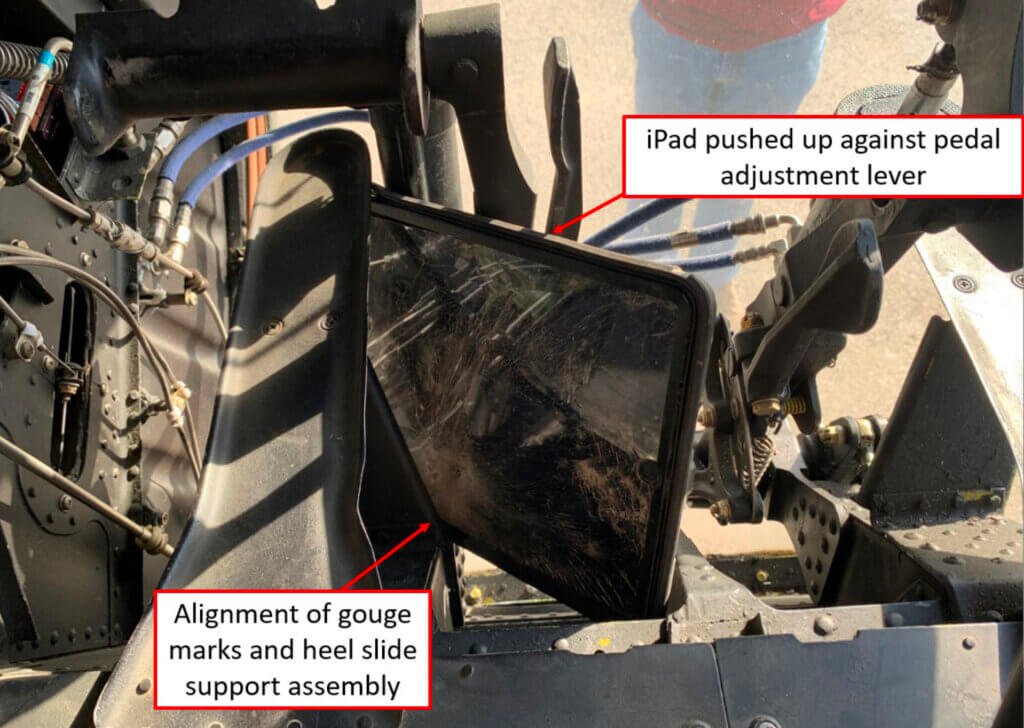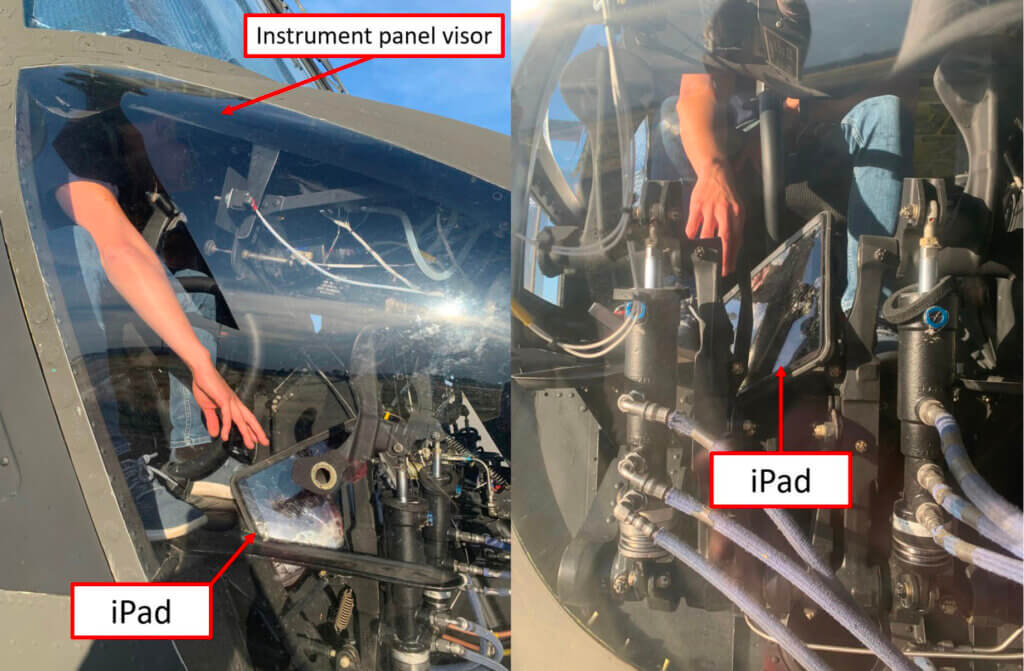Investigators from the National Transportation Safety Board (NTSB) have demonstrated that an Apple iPad likely jammed against the co-pilot’s left pedal prior to the fatal crash of a Rotak Helicopter Services Chinook in Idaho last year.

The Boeing CH-47D had been filling its bucket on a long line in the Salmon River on the afternoon of July 21, 2022, when it began spinning to the left. Eyewitness video captured the helicopter continuing its counterclockwise rotation as it descended and impacted the river just 13 seconds later.
Although ground firefighters on scene quickly extracted the pilot, Thomas Hayes, 41, and co-pilot, Jared Bird, 36, from the water, both men ultimately died from their injuries.
The NTSB has not yet released its final report on the accident, which will include its determination of probable cause. However, the newly opened public docket for the crash contains an “Exemplar Helicopter and iPad Examination Summary” that details how investigators established the source of damage on the flight crew’s iPad, which was recovered from the river with three distinct gouge marks and a bend from the back of the case toward the screen.
Apple iPads and other so-called electronic flight bags (EFBs) have become common equipment in aircraft cockpits, used for flight planning, as a supplemental navigation aid, and to replace paper documents, among other purposes.

NTSB investigators conducted their study using an exemplar CH-47D with a cockpit configuration similar to that of the accident helicopter. During the accident flight, the pilot was sitting in the left seat and the co-pilot in the right.
Using auxiliary power to activate hydraulic assistance, investigators first pushed the pilot’s left pedal forward, which resulted in the co-pilot’s left pedal also moving forward. (Left pedal is used to commence a yaw to the left and/or stop a right yaw, and vice versa.)
Investigators then placed the study’s iPad between the left pedal and the airframe, next to the heel slide support assembly, on the co-pilot’s side. When additional pressure was applied to the pilot’s left pedal, the iPad fell and jammed between the left pedal and heel slide support assembly. That prevented the pedals from re-centering while also pushing against the co-pilot’s left pedal adjustment lever.
When pressure was applied to the pilot’s right pedal, the iPad was squeezed in between the pedal and the heel slide support assembly. The gouges in the recovered iPad aligned with a sharp, vertical metal piece of the assembly underneath the heel slide.
Additional right pedal input forced the iPad to apply more pressure to the co-pilot’s pedal adjustment lever. Examination of the accident helicopter’s wreckage revealed that the co-pilot’s left pedal was at the forward-most adjustment setting, while his right pedal was at the middle adjustment setting.
According to investigators, the accident co-pilot’s height was five feet, ten inches. During the study, with seat restraints on and seats adjusted for comfort, neither a slightly shorter (5’7”) nor a slightly taller (6’2”) man could reach the iPad in its jammed position.

Investigators also pointed out that the co-pilot’s flight helmet would have further complicated any attempts to retrieve the iPad, as the helmet would have contacted the visor over the instrument panel.
Andy Evans, director of the aviation safety consultancy Aerossurance, said that while operators are generally required to conduct risk assessments before adopting EFBs, there is often not an explicit requirement to consider the risk of the EFB as a loose object.
“Hopefully this accident will prompt operators to have a long hard look at all possible loose articles in cockpits and robustly securing valuable tools and sources of situational awareness like EFBs,” he told Vertical by email.









